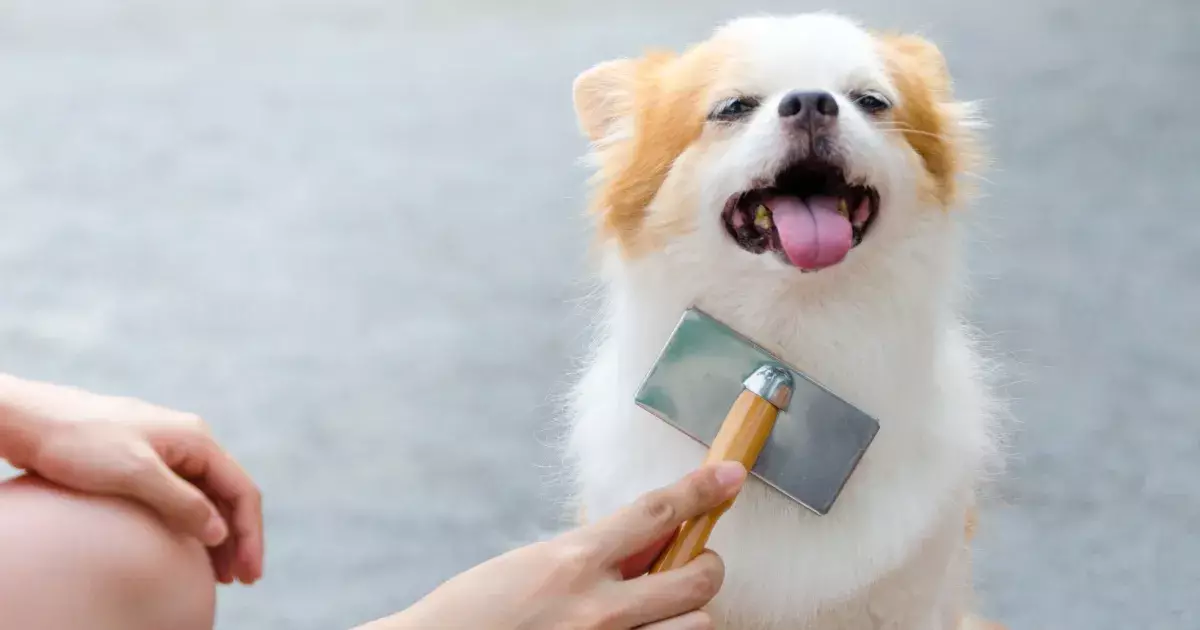Keeping your dog’s coat clean and well-groomed is essential for their health and your home’s cleanliness. While dogs have some innate behavior that helps them maintain their fur, human intervention is necessary for thorough grooming. Regular brushing is not just about aesthetics; it plays a vital role in keeping your dog’s coat healthy and your living space free of excessive fur. This article will delve into the importance of brushing, explore different grooming techniques based on coat types, and provide tips for maintaining your dog’s coat at home.
The Benefits of Regular Brushing
Brushing your dog’s coat offers several advantages beyond a neat appearance. One crucial benefit is the removal of loose fur, which minimizes shedding. Excessive hair on furniture, clothing, and vehicles can be frustrating and often requires extensive cleanup. By brushing your dog routinely, you can significantly reduce the amount of fur you have to contend with daily.
Additionally, brushing helps to distribute natural oils throughout your dog’s skin and coat, contributing to a shiny and healthy appearance. The act of brushing also serves as an excellent opportunity for owners to inspect their dog for signs of medical issues. While grooming, look for abnormal lumps, skin irritations, and any signs of infestations like fleas or ticks. Early detection of such issues can lead to timely veterinary care, thus enhancing your dog’s overall well-being.
Understanding the particular needs of your dog’s coat is essential to performing an effective grooming routine. Dog coats vary widely in type and texture, and different breeds necessitate different brushing tools and frequencies. Long-haired breeds like Collies or Afghan Hounds require weekly brushing due to their propensity to tangle. A pin brush is typically the best choice for these dogs, as it reaches the undercoat and extracts loose hair without causing pain.
On the other end of the spectrum, short-haired breeds like Beagles or Boxers benefit from less frequent brushing. Generally, a rubber grooming glove or a stiff-bristle brush suffices for these dogs, as their coats don’t mat easily. Increasing the frequency to biweekly can help remove loose hairs and dirt, ensuring their coat remains in optimal condition.
Wiry-haired breeds, such as Terriers, have specific grooming needs too; they usually require a slicker brush to remove dead hair, combined with occasional use of a stripping knife under the guidance of a professional. Understanding these individual grooming requirements can streamline the brushing process and ensure that your dog is comfortable.
Once you’ve equipped yourself with the right tools, the next essential step is mastering the technique. The goal of brushing is to be gentle and compassionate while ensuring effectiveness. Always brush in the direction of hair growth, moving down and outward. This technique avoids discomfort and is generally more enjoyable for your dog, who may not appreciate being brushed in the opposite direction.
If you encounter tangles or mats, use a detangling spray to ease the process before tackling the problem with a comb or mat-splitting tool. Never rush through this; take your time and keep an eye on your dog’s comfort. For severe mats, where detangling proves impossible, cutting should be done carefully to avoid injuring the skin. If you’re not comfortable with this, seeking professional help from a groomer is advisable.
Though brushing can often be a do-it-yourself task, professional groomers are worthwhile allies for many pet owners. They bring a level of experience that can be beneficial for dogs with challenging coats or for those who are apprehensive about grooming. Even the most skilled owners can feel the difference when their dog is groomed by a specialist who understands various coat types and the complexities involved in maintaining them.
Moreover, groomers know how to handle dogs that may be fearful or uncooperative. They possess the skill necessary to turn a potentially stressful experience into a calm and enjoyable one for your dog. Regular visits to a groomer can also help keep your dog’s grooming routine manageable at home.
Brushing your dog is an integral part of responsible pet ownership that benefits both your canine companion and your household. A regular grooming regimen helps maintain the health of your dog’s coat, enhances their comfort, and allows you to catch any potential health issues early. Understanding your dog’s specific grooming needs and techniques can turn this task into an enjoyable bonding experience. Ultimately, whether you choose to groom at home or consult a professional, your efforts will ensure your dog remains healthy and happy.

